For a few days each June, the quiet streets of Logroño, a small city in Spain’s Rioja region, become a testing ground for new ideas about public space. This year marked the tenth edition of Concéntrico, an international festival of architecture and design that invites artists and architects to reimagine how cities are built—and for whom.
The 2025 edition concluded a season of growth for the festival, which has expanded its activities beyond the annual event. New permanent works, traveling exhibitions, international partnerships, and educational initiatives now extend Concéntrico’s influence year-round. The festival continues to position itself as an open, critical platform; one that invites institutions, citizens, and creative communities to reflect together on the future of urban life.
For six days, Logroño became a site of shared inquiry. Temporary installations were peppered throughout the city: across public squares, amid roundabouts, and along riverbanks. Visitors engaged with immersive environments, participatory dinners, walking tours, and workshops that encouraged them to consider social, ecological, and spatial questions through direct experience.
The 2025 program centered on four themes: Food, explored through shared meals, open kitchens, and urban agriculture as tools for rethinking social life; Climate, addressed as both crisis and opportunity, with low-tech, vernacular solutions for sustainable urbanism; Water, treated as infrastructure and ritual, reclaiming the Ebro River and historic fountains; and Social rituals, highlighting how everyday gestures and gatherings shape the emotional and political life of public space.
This year’s participants included international studios such as Leopold Banchini Architects, MVRDV, salazarsequeromedina, and h3o architects, alongside emerging voices selected through the festival’s open call. Many of the projects took an experimental or participatory approach, using temporary structures and interventions to explore how public space might be rethought. Below are a few that stood out, and more can be viewed on the festival’s website.
Monumental Splash by salazarsequeromedina
Monumental Splash, by architecture studio salazarsequeromedina, transformed Logroño’s historic Espartero Fountain into a playful public pool, a communal oasis in the city center. The installation reimagined public space in an effort to counteract the urban heat island effect, offering a cool environment during the hottest days of the year. Built from simple, reusable materials, the ring-shaped structure invited citizens to engage with water, climate, and monuments in new ways.
Round About Baths by Leopold Banchini Architects
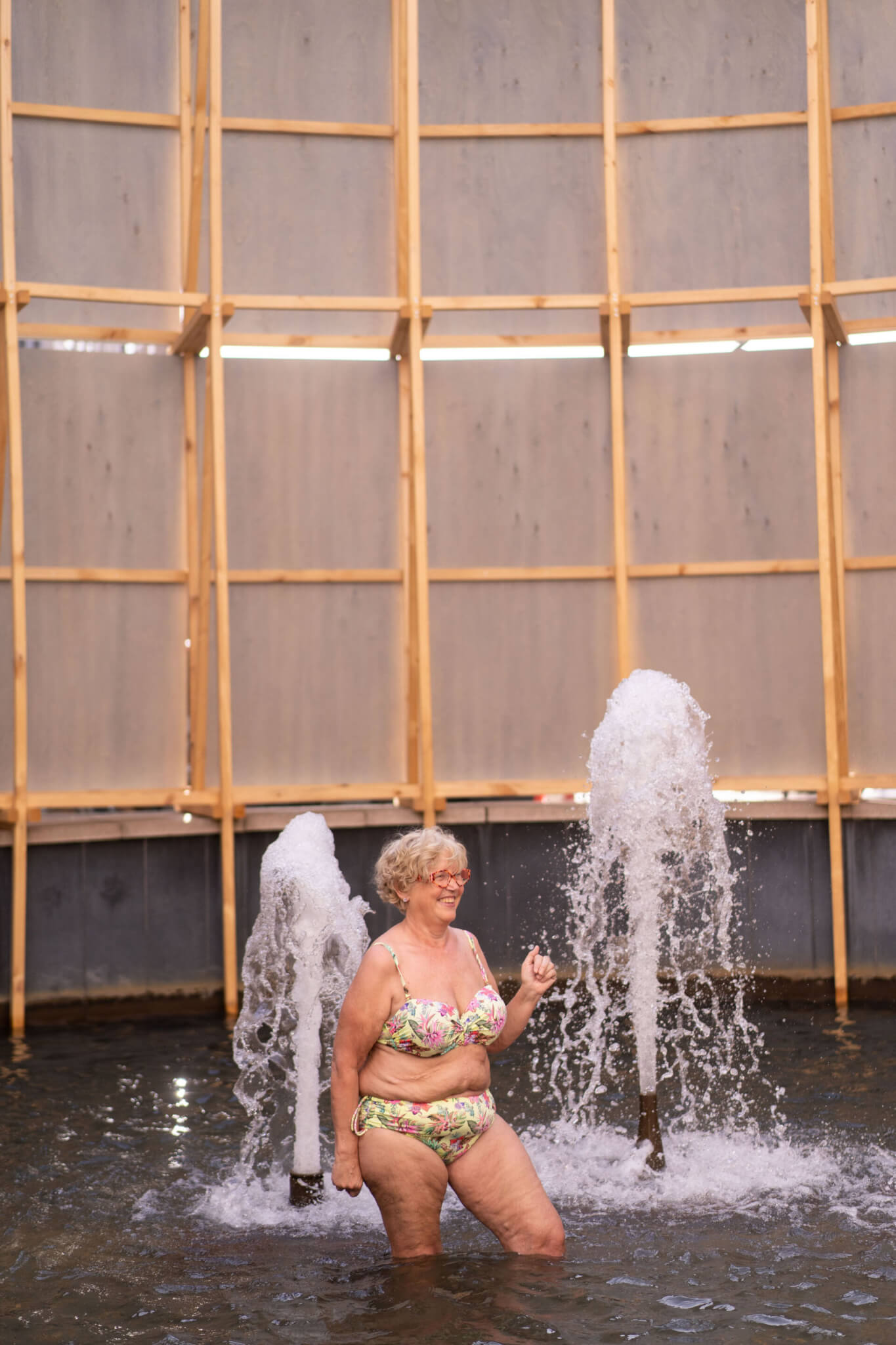
Round About Baths turned a traffic-filled roundabout into a temporary public bath with steam rooms, cold-water basins, and shared changing areas. Designed by Swiss architecture firm Leopold Banchini Architects, the installation offered a quiet, communal space in a spot usually dominated by cars, attempting to invite bathers to reconsider how urban infrastructure can be used differently.
Tapete by MVRDV
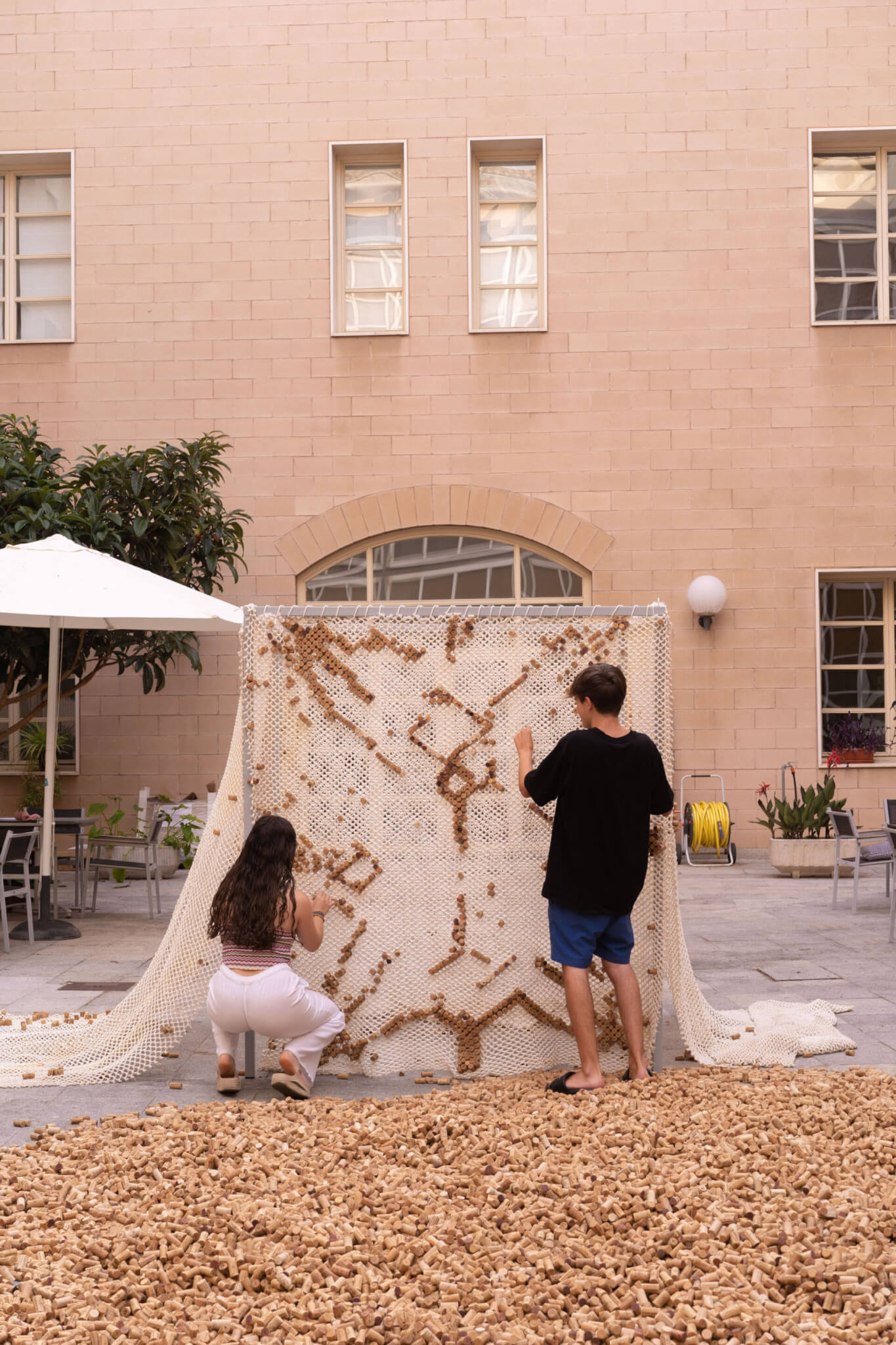
Tapete, “rug” in Spanish, was a workshop led by MVRDV that explored creative ways to repurpose materials, specifically wine corks. Participants experimented with traditional local netting techniques, learning about their history, uses, and how to apply them using cork.
The Boxing Diner by Zyva Studio
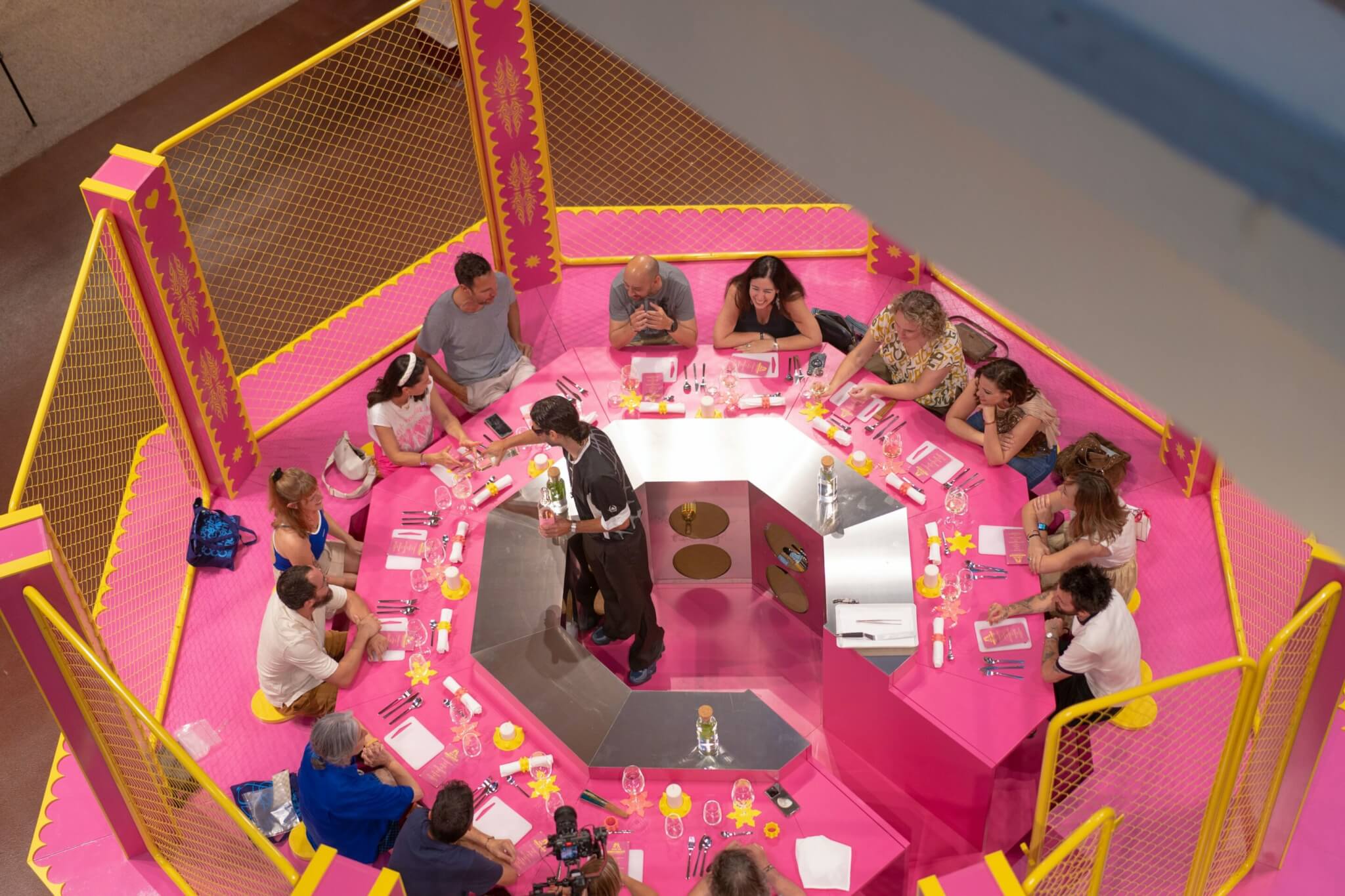
The Boxing Dinner by Zyva Studio led by French architect Anthony Authié was a circular installation that turned the family dinner into a space for confrontation and exchange. Drawing from the layout of ancient Greek agoras and Mixed Martial Arts arenas, it centered on an octagonal table designed for both eating and debate. During Concéntrico, it hosted a four-course meal, blending food with performance.
Backstage Fireplace by Sam Chermayeff Office
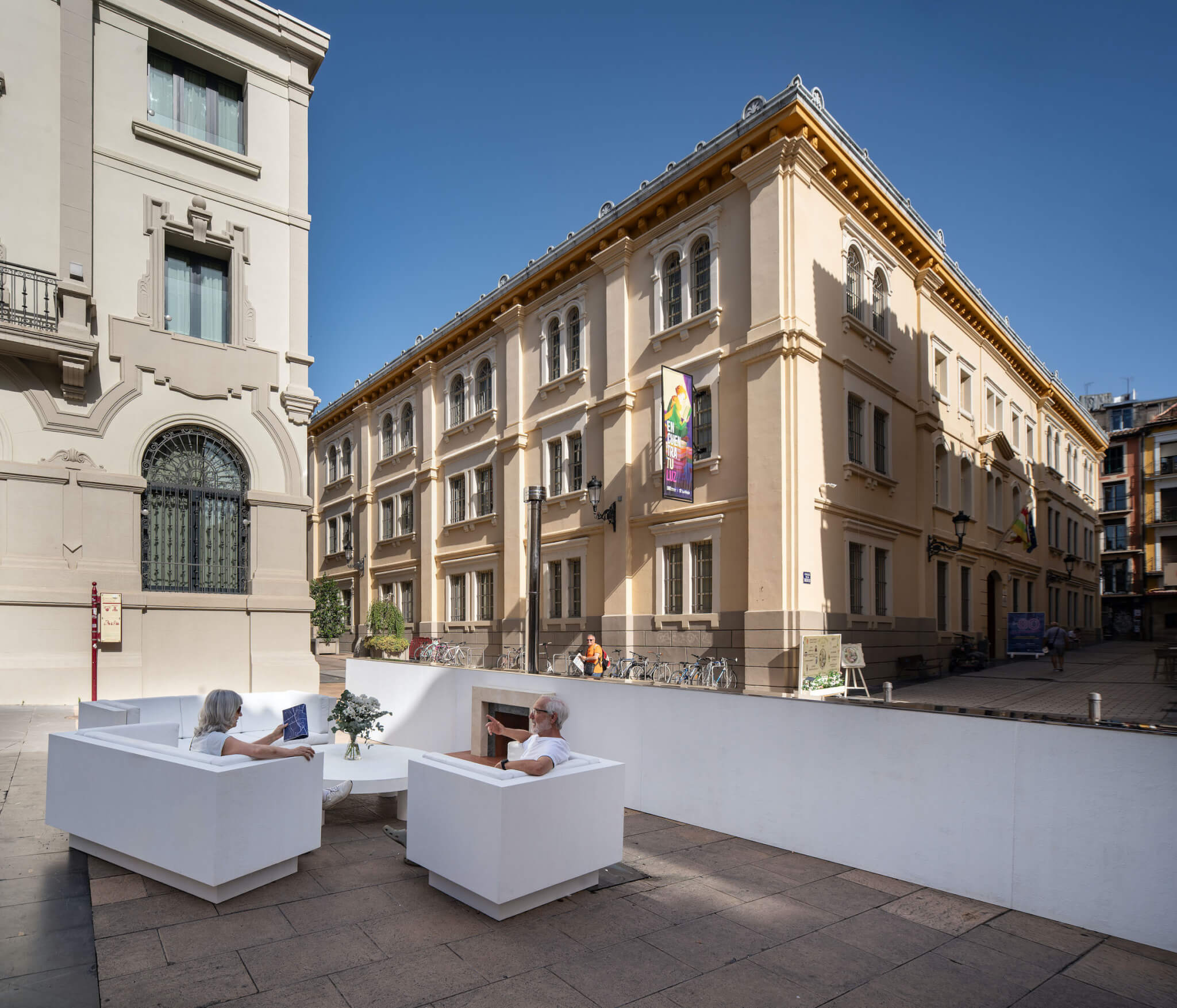
Backstage Fireplace by Berlin-based Sam Chermayeff Office worked to transform Plaza San Agustín into a domestic scene. A stark, white wall divided the space, creating a living room setup with a fireplace and sofas on one side, and mirrors with light bulbs on the other, meant to evoke a backstage dressing room. The installation explored the blurred boundary between public and private life, inviting reflection on how we present ourselves in shared spaces.
La batalla del jardinero planetario by Borneo
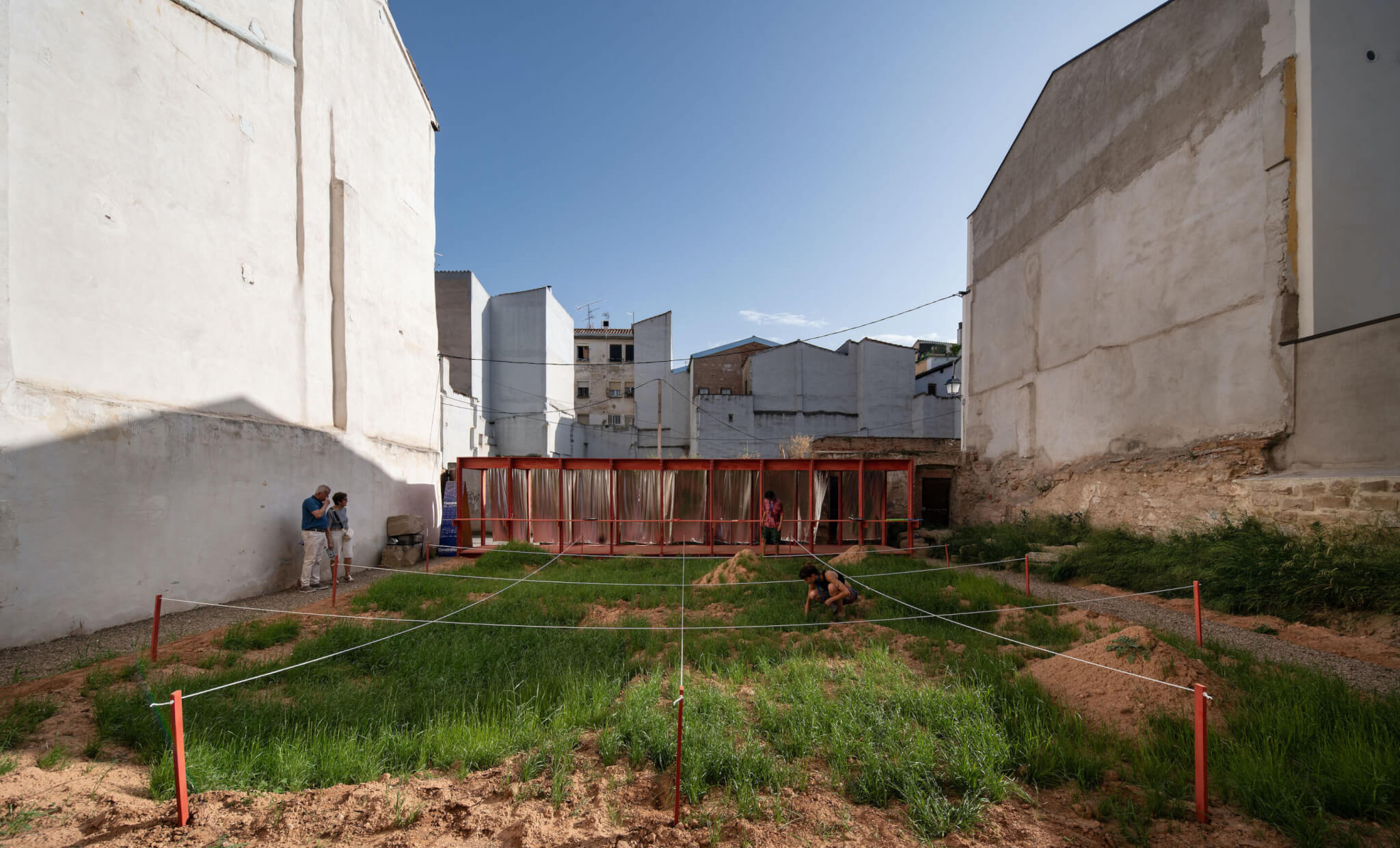
La batalla del jardinero planetario is now a permanent installation by Borneo, located on Calle San Roque. Inspired by Gilles Clément’s concept of the “planetary garden,” it turned an empty lot into a veranda overlooking a space for urban biodiversity. The site aims to encourage reflection on care, ecology, and shared responsibility, using play and participation to explore how we might inhabit cities differently.
Marking its ten-year milestone, the festival also released a book this year, Concéntrico: Urban Innovation Laboratory. Rather than serving as a retrospective celebration, the volume gathers 86 projects from past editions—selected from more than 150 realized works by artists, architects, and designers across 20 countries—as a way to reflect on what temporary interventions can reveal about the long-term challenges cities face.
→ Continue reading at The Architect's Newspaper
